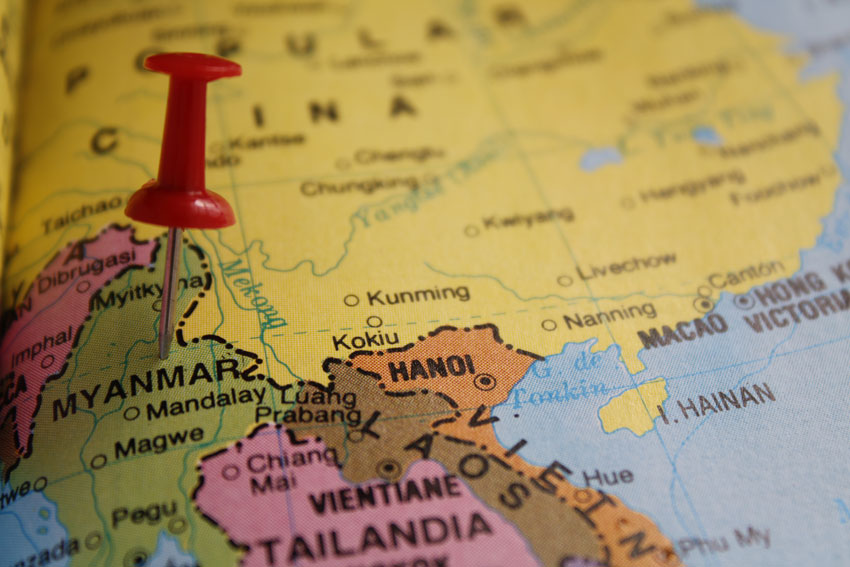Myanmar's political history is full of violent military coups. On February 1, 2021, General Min Aung Hlaing seized control of Myanmar, turning a budding democracy back into a violent dictatorship. This is the third time in Burma's post-independence history that the military has taken control of the country, 59 years after the first coup led by General Ne Win and 32 years after the second coup ordered by SLORC. Although the country's history has been full of brutal military regimes, there have also been many popular revolutions against military regimes, the most notable being his 8888 uprising, the Saffron Revolution, and the current Spring Revolution. .
The Spring Revolution is different from previous revolutions in that it is the most sustained anti-junta movement this country has ever seen. While the 8888 Uprising and the Saffron Revolution both lasted only a few months, the Spring Revolution continues to gain momentum in 2024, more than three years after the latest coup occurred. I am. The long-running conflict still continues across the country. As of April 26, 2024, 4,946 civilians have been killed by the regime and 26,573 have been arrested. Despite violent repression, millions of people took to the streets to protest the military occupation. The ongoing Spring Revolution involves a variety of actors and Includes initiatives.
To strengthen cooperation between the various branches of the Spring Revolution, pro-democracy activists are increasingly relying on social media. For women in particular, social media has become a powerful space to express political opinions and organize against the military regime. In response to growing online resistance, the junta implemented harsh digital crackdown measures that actively persecuted civilians who showed support for the opposition online. Online violence against democratic activists often leads to offline violence, including arrests and sexual assault. The Burmese military's digital repression is highly gendered, with female activists facing significantly higher rates of gender-based violence and persecution than male activists.
Authoritarian actions and responses to online dissent in Myanmar can be divided into five categories: internet shutdowns, online censorship, surveillance, targeted persecution of online users, and social media manipulation and disinformation. However, in addition to these five categories, women online activists in Myanmar also face specific forms of gender-based violence. Examples of such gender-based violence include leaking personal information, abusive messages containing sexist language, leaking non-consensual intimate videos and images, sexual misinformation, and sexual violence. These include threats, rape threats, and death threats. Various forms of sexual oppression have the most traumatic physical and psychological effects, exposing female online activists and their families to social shame. The overwhelming majority of gender-based online violence targeting women democracy supporters is perpetrated by men.
In Myanmar, women who express political opinions on social media are subject to identity breaches at a much higher rate than men who are politically active online. In the Myanmar context, security forces have arrested many women activists whose personal information was exposed by pro-military and male-identifying social media figures, such as Hang Nyaing Oo and Ba Nyunt. Information identification is a particularly gender-based digital oppression tactic. The arrests carry a further risk of more gender-based violence against women, as the Burmese military systematically commits gang rapes of women and girls.
The gender-discriminatory nature of the Burmese military regime's digital repression is worrying, as online violence against women poses a major barrier to women's meaningful political participation. According to Freedom House's 2023 Freedom on the Internet report, Myanmar is one of the most digitally repressive regimes in the world after China. Enabled by political support from Russia and China and equipped with international surveillance technology, the Burmese regime is committing crimes against humanity by targeting individuals who speak out against military rule on social media. Women bear the brunt of this targeted digital oppression simply because of their gender.
The case of Myanmar highlights how dictators are using social media as a political tool to not only react to women's online activities, but actively block them. The online repression tactics employed by the Burmese military could be attractive to other authoritarian governments that suppress feminist dissent in their countries. If this disturbing possibility were to materialize, women's rights could be further regressed at a very alarming rate in various authoritarian regimes. Therefore, it is not enough for the international community to condemn gender-based digital oppression in Myanmar through statements and press releases. International stakeholders are working with civil society in Myanmar to provide women with strong training in digital security and fight for democracy with safer, creative and disruptive forms of digital activism. We need to be able to continue.



